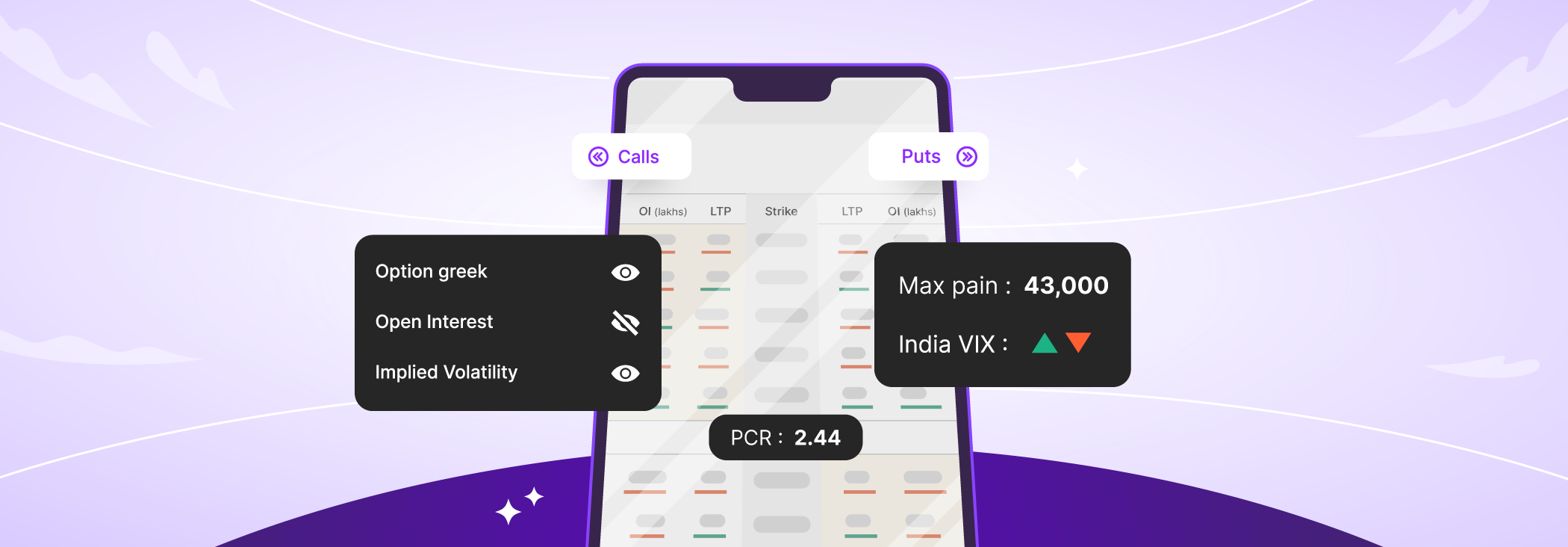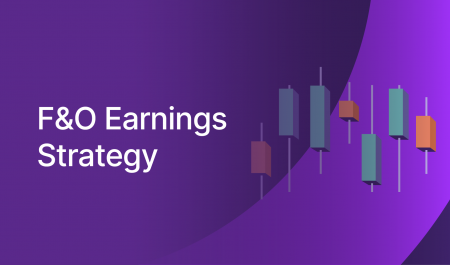Imagine you're a driver and you have planned a road trip. Before you set off, it's important that you learn the rules of the road, understand traffic signs and the meaning of various symbols. This knowledge will help you drive safely and make informed decisions.
Understanding the option chain is similar to knowing the rules of the road. To trade with confidence, you must understand and familiarise these eight key terms. Let's break down these commonly-used terms you will encounter while trading options.
Call option: A call option gives the holder the right to buy the underlying asset at a predetermined price. The call option can be traded in either direction - up or down. If you expect the market to move higher before the contract expires, you buy call options. Similarly, if you expect the market to fall, you sell a call option.
Put option: A put option gives the holder the right to sell the underlying asset at a predetermined price. Like call options, put options can also be traded in both directions. If you expect the markets to fall before the contract expires, you buy put options. Similarly, if you expect the market to go up, you sell a put option.
Strike price: It is the price at which the buyer agrees to buy and the seller agrees to sell. The strike price helps in determining the price or premium of the option. In a nutshell, if the Nifty50 is trading at 18,816- then 18,700 and 18,900 figures which you see on your option chain are the strikes that you can trade as per your view.
Open Interest: It is the total number of contracts of an option that are currently open (or outstanding). On a lighter note, it means that these are the strikes where bulls and bears have made their base. In options trading, open interest along with price helps to gauge market sentiment. Traders also use this data to identify support and resistance levels.
PCR: Gauging the mood of the market is essential when you are planning a trading strategy. How do you do that? By using Put-Call-Ratio (PCR). When you divide the total open interest of put options by the total open interest of call options- you get the PCR. Of course, nothing can predict tops or bottoms. But, consider this as a ratio which can help indicate that the markets have reached pessimism or exuberance zones and are about to reverse.
Max Pain: It is the option strike of the underlying at which the largest number of contracts will expire worthless. This means the maximum loss will be borne by option buyers and maximum profit will be earned by option sellers. Traders use this theory to predict the expiry level. If you know where the market price will end on the expiry, an endless number of option strategies can be deployed.
Expiry date: The expiry date refers to the exact date on which a contract becomes null and void. Unlike shares, options have a shelf life and on expiry the all the OTM and ATM option contract loses its value. When you plan to buy an option, you can choose from a range of expiration dates in your options chain. It is important to note that all weekly Nifty50 contracts expire on Thursdays and monthly expirations are usually on the last Thursday of the month.
All in all, understanding the key terminologies of an option chain is a crucial first step before trading options. By familiarising yourself with these terms, you will be able to make informed decisions and develop profitable trading strategies. Remember that this is only an overview of the most important terms. If you like to dive deeper and learn the concepts in more detail with a jargon-free approach, click here to explore further. Happy trading!


